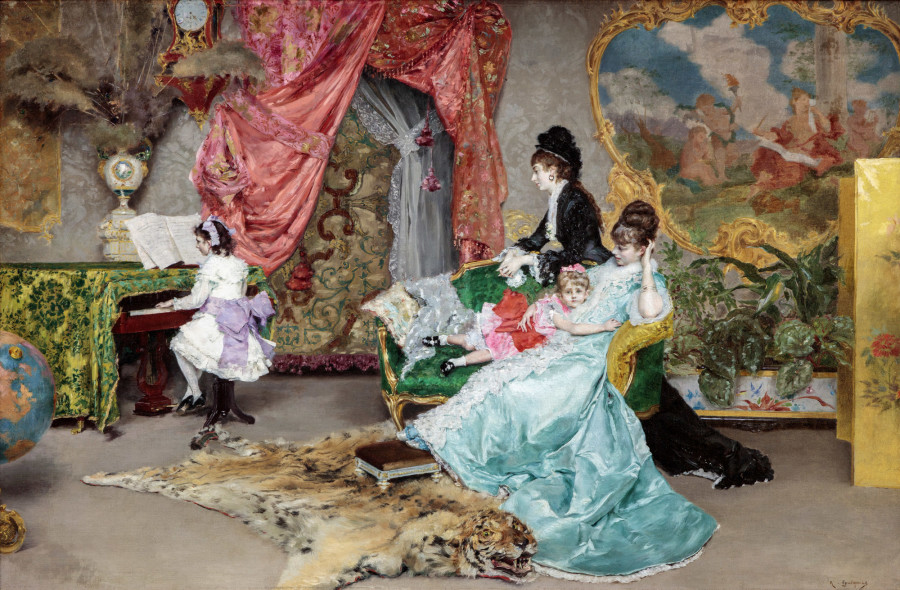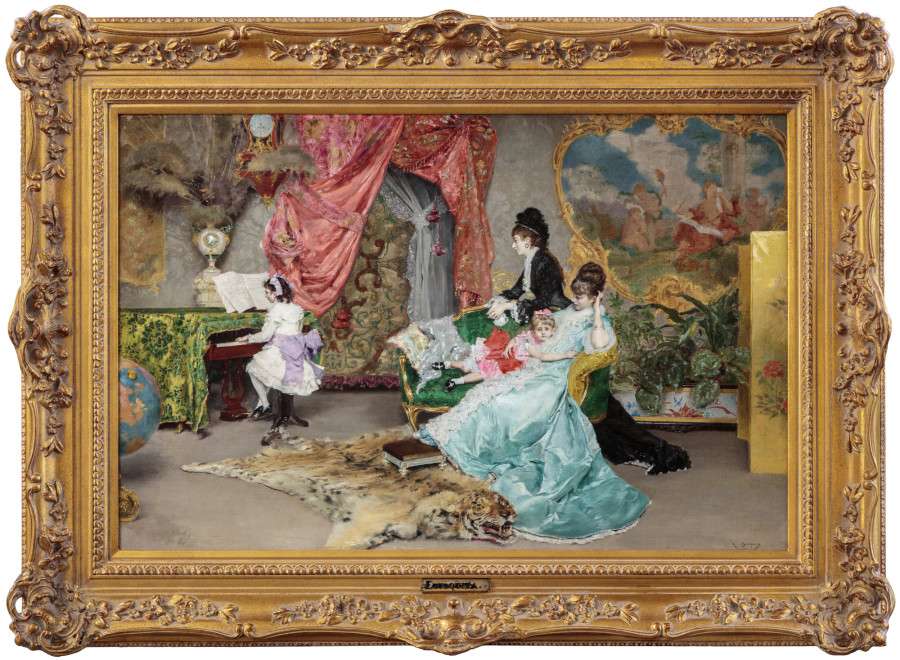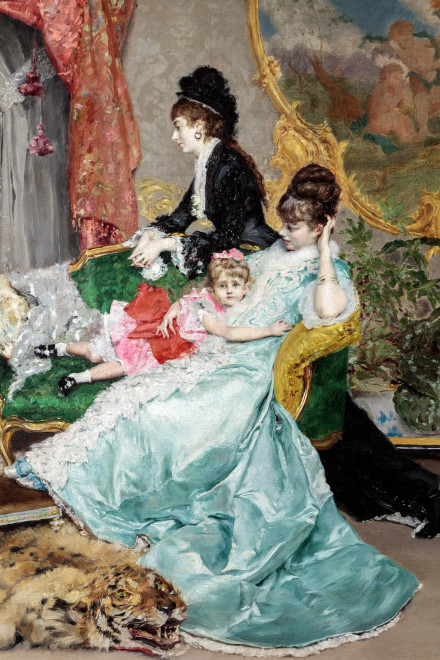Egusquiza was frequently visited by fellow artists, musicians, writers and international patrons, and the lifestyles of these bon vivants were reflected in his paintings and those of such contemporaries as Alfred Stevens, James Tissot and notably Giovanni Boldini.
Provenance
Sale: Christie’s New York, 6 May 1999, lot 54, as The Recital
Acquired by the present owner at the above sale
Catalogue note
In 1845, Rogelio Egusquiza was born in the northern Spanish port city of Santander to a wealthy family; as a young boy he enjoyed frequent visits to Paris— where, in 1860 he began study at the École des Beaux-Arts with renowned portrait painter Léon Bonnat. The young artist’s studio work was complemented by extensive travel through England, Holland, Belgium and Germany before a pivotal visit in late 1874 to Rome. There, he worked with the Italian brothers Raimundo and Ricardo Madrazo in the studio of recently deceased Spanish artist Marià (also known as Mariano) Fortuny. Fortuny’s legacy lived on in the Madrazos’ work and, in turn, Egusquiza’s paintings, such as The Concert, with its luminous color and multi-layered surface textures enhancing the materiality of the image.
Egusquiza leaves little empty compositional space, filling the music room with an array of eye-catching objects— from a large globe to heavy swags of brocade draperies, to glossy plants overspilling a jardiniere, to a shining gold Japanese screen (Egusquiza’s interest in japonisme was sparked by Fortuny). Some of the room’s objects also appear in Egusquiza’s Concert de famille, exhibited at the Exhibition Universelle of 1878. This painting also features a piano-playing child identified as Fortuny’s son Marianowith his mother Cecilia listening. (This invites speculation that the girl of the visually related The Concert is Mariano’s sister María Luisa and her audience part of the Spanish artists’ circle). These compositions’ eclectic, chic interiors may reflect elements of Egusquiza's own Paris studio on the Faubourg St. Honoré. Returning to the city in 1876, Egusquiza was frequently visited by fellow artists, musicians, writers and international patrons, and the lifestyles of these bon vivants were reflected in his paintings and those of such contemporaries as Alfred Stevens, James Tissot and notably Giovanni Boldini (who was also deeply influenced by Fortuny). The Concert also points to Egusquiza’s passion for music, particularly Richard Wagner’s operas, which led the artist to shift from his celebrated genre scenes, like The Concert,to symbolist works illustrating Wagnerian themes.






